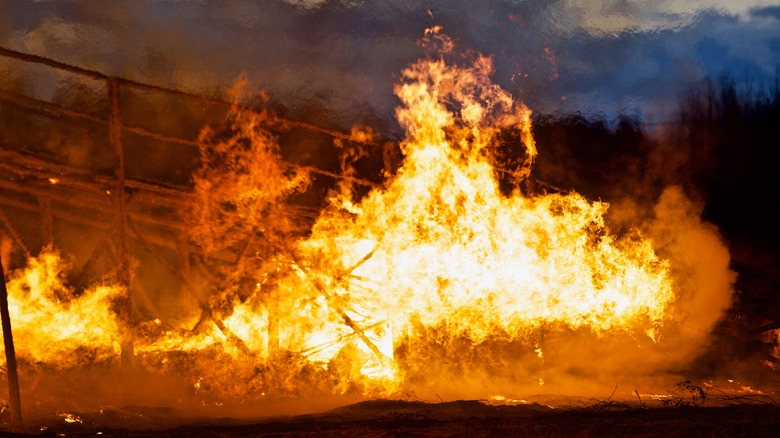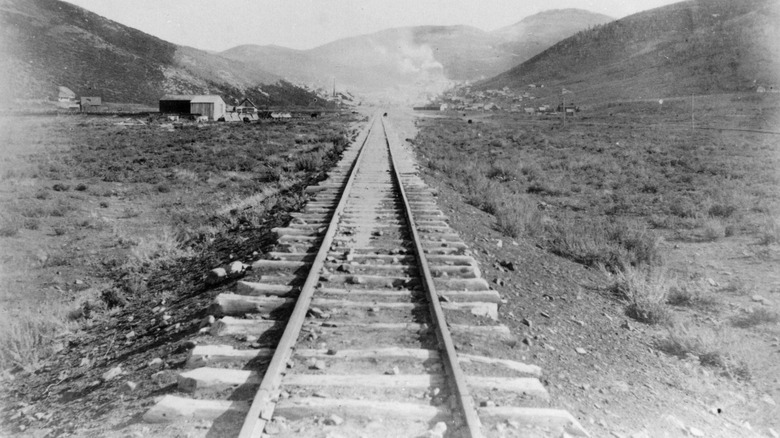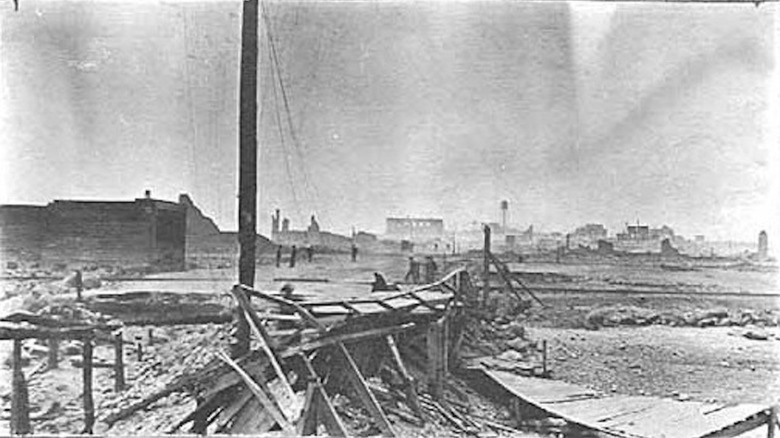Tragic Details About The Great Hinckley Fire Of 1894
On September 1, 1894, the town of Hinckley, Minnesota experienced a wildfire that few can rival. According to MinnPost, it had a population of up to 1,500 at the time. When the fire was over, some 350,000 acres, more than 400 square miles, were destroyed. The fire was triggered by dry conditions. The Minnesota Department of Natural Resources explains that fires were not uncommon at this time, and while that was dangerous enough, the dust, wind, and high temperatures proved to be other agitators that would set the stage for the firestorm.
The Hinckley fire actually started from two separate smaller fires — a brush fire and a trash fire that became uncontrollable. But a pocket of cooler air above the town also made conditions worse. When the fires converged, flames pierced the cool air, causing it to sink and fan the flames, reports Minnesota Public Radio. A firestorm is not just a big fire — it contains a lot of energy, and makes it difficult for people to breathe. Speaking to the Saint Paul Pioneer Press, former Minnesota Department of Natural Resources commissioner and forester Rod Sando said, "It's like several Hiroshima-sized atomic bombs going off ... There's very little oxygen available and the low areas tend to fill up with carbon-enriched gasses" (via Macalester College).
The fire spread quickly
It's no secret that fire spreads quickly, and the special conditions of the Hinckley fire meant that it escalated faster than a fire typically would. This amounted to little time for townspeople to escape. MNopedia reports that it only took about an hour and a half for the fire to engulf the town.
Luckily for some residents, trains were headed toward Hinckley as the fire raged, giving them a means to escape. That said, not all made it. Some witness accounts claimed that some people were on fire as they chased after a train as it departed the town (via MNopedia). Dr. W.H. Crary, a passenger on one of those trains, told The New York Times at the time, " ... [T]he engineer was compelled to reverse his lever and run back, leaving behind scores of unfortunate ones who had not been able to reach the train, their only means of escape." He added, "On rushed the train through the fiery, hot breath of the pursuing flames, for a stop would have been fatal to all on board," per Macalester College.
About one-third of the population died
The Minnesota Department of Natural Resources reports that 418 men, women, and children lost their lives in the fire that day — nearly one-third of the town's population. Many of the victims did not initially die from burns, but suffocated from a lack of oxygen. Homes, farms, and businesses were also burned to the ground.
Those who did survive sought refuge anywhere they could. Macalester College reports that around 300 people survived by crouching in a foot and a half of mud in the nearby Skunk Lake. About 100 more people took cover in the town's gravel pit, and others protected themselves in a potato field. Survivors suffered from burned lungs, swollen eyes, burns, and blisters, per City of Hinckley. Many would not have survived without the heroic efforts of train engineers, who continued to operate their locomotives even after being burned or affected by smoke (via Hinckley Fire Museum).


